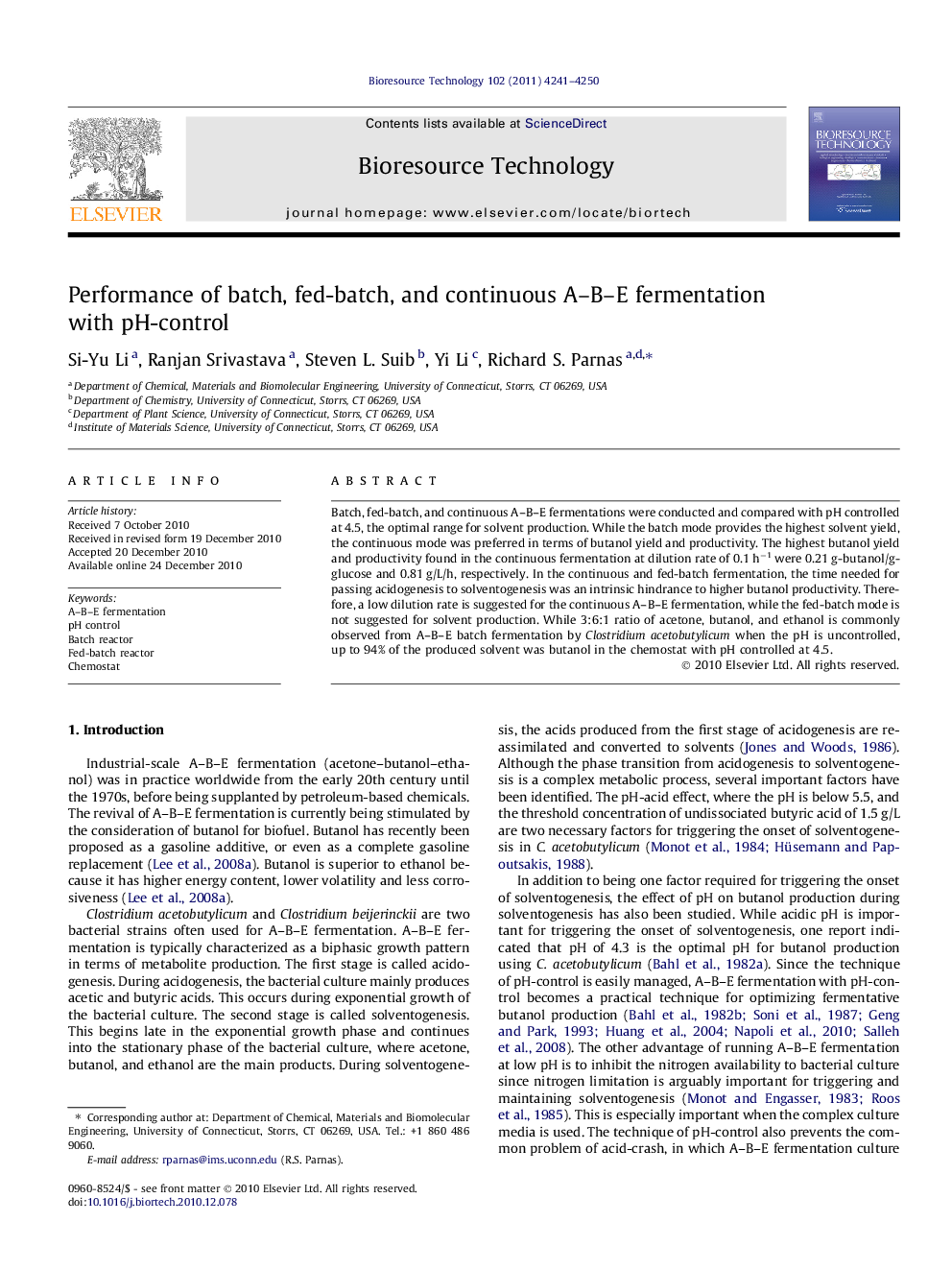| Article ID | Journal | Published Year | Pages | File Type |
|---|---|---|---|---|
| 10395286 | Bioresource Technology | 2011 | 10 Pages |
Abstract
Batch, fed-batch, and continuous A-B-E fermentations were conducted and compared with pH controlled at 4.5, the optimal range for solvent production. While the batch mode provides the highest solvent yield, the continuous mode was preferred in terms of butanol yield and productivity. The highest butanol yield and productivity found in the continuous fermentation at dilution rate of 0.1Â hâ1 were 0.21Â g-butanol/g-glucose and 0.81Â g/L/h, respectively. In the continuous and fed-batch fermentation, the time needed for passing acidogenesis to solventogenesis was an intrinsic hindrance to higher butanol productivity. Therefore, a low dilution rate is suggested for the continuous A-B-E fermentation, while the fed-batch mode is not suggested for solvent production. While 3:6:1 ratio of acetone, butanol, and ethanol is commonly observed from A-B-E batch fermentation by Clostridium acetobutylicum when the pH is uncontrolled, up to 94% of the produced solvent was butanol in the chemostat with pH controlled at 4.5.
Related Topics
Physical Sciences and Engineering
Chemical Engineering
Process Chemistry and Technology
Authors
Si-Yu Li, Ranjan Srivastava, Steven L. Suib, Yi Li, Richard S. Parnas,
